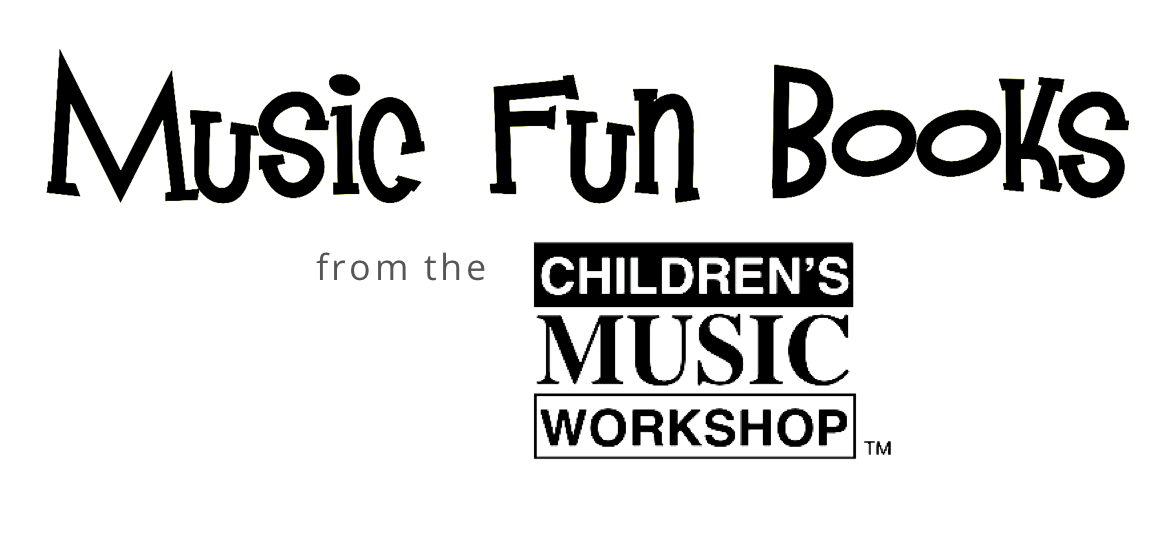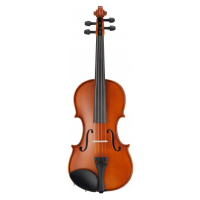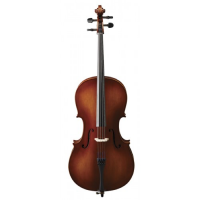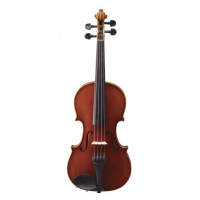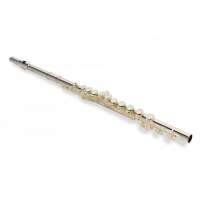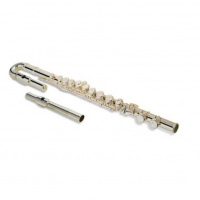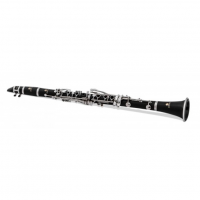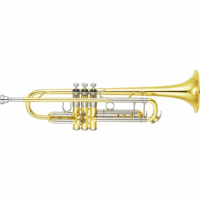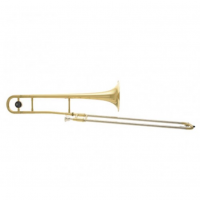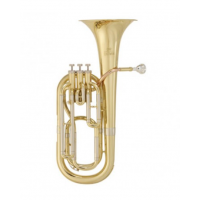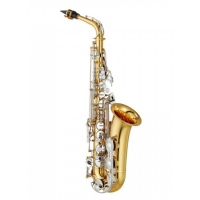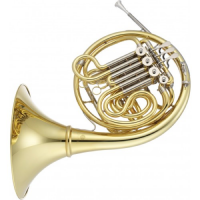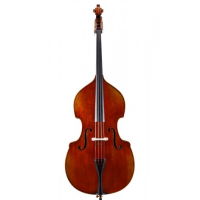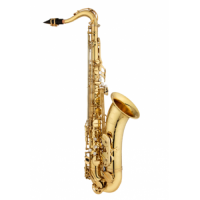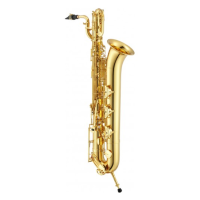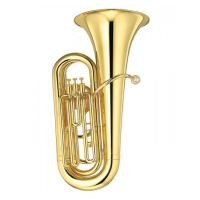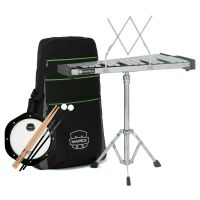Parts of the Cello
Cellos take the form and function of the violin to a different place with a larger body and different playing style. Players place the cello between their knees and bow it from a squarely seated position behind the instrument, unlike the violin which is held aloft at shoulder level and the string bass where the player is standing or seated on a stool behind it.
To be the best you can be at playing the cello, you should know all of the usual names of the parts of the cello and what function they perform. You should also know how individual cello parts can be removed and replaced, how cello parts should be serviced and maintained and what to do if you think a part of your student cello is damaged or broken.
Let's learn about the anatomy of a typical cello from end to end. If you'd like to jump ahead, use the anatomy chart above to click a part you'd like to read about first.
WHAT IS THE BASS BAR?
This strip of seasoned spruce is hidden inside the cello but has a large effect on the instrument's bass tone and lower register in general.
The bass bar is a thin strip of seasoned spruce, mounted in a standing up position under the left side of the top. It is mounted in line with the strings and reaches almost from one end of the cello body to the other.
The bass bar shapes the waves of vibration inside the cello to produce deeper, more resonant bass tones.
Click to return to anatomy chart
WHAT ARE THE BOUTS AND WAIST?
The cello is shaped with bouts and a waist to maximize sound production and make room for the bow.
The terms "bouts" and "waist" or "c-bouts" describe various parts of the cello body's distinctive shape. When the instrument is held standing on end, the waist or c-bouts are the cinched-in area in the middle, cut out of the curve of the wood of the top along its edge. This allows the bow to pass over the strings at a variety of extreme angles without hitting the side of the body.
Above the waist emerge two upper bouts and below are two lower bouts. The hourglass shape made by the bouts makes the cello recognizable instantly by the player and non-player alike.
Click to return to anatomy chart
WHAT IS THE BRIDGE?
The bridge is a small, decoratively carved piece of maple that holds the strings away from the top of the instrument and transfers vibration to the body.
The bridge is a small, decoratively carved piece of maple that is positioned on the top between f-hole notches and holds the strings away from the cello's top surface. This allows the strings to vibrate freely while transferring that vibration to the resonant cavity of the body. It also provides a spacer between the strings so they rest evenly above the fingerboard. The bridge is not permanently attached to the cello but holds it's position firmly under the tension of the strings.
The height of the bridge can be adjusted within the standard specifications to suit the playing style of the player.
Click to return to anatomy chart
WHAT IS THE END PIN ROD (SPIKE)?
The end pin rod keeps the cello firmly planted into the floor while playing
The end pin rod is a thin rod of metal that emerges from the bottom of the cello and is held fast by an end pin thumb screw. The height of the end pin rod can be adjusted to fit the height and playing style of the player. On the end of the end pin rod is a rubber tip or sharp tip that can directly pierce the floor.
The end pin rod anchors the cello to the floor in front of the player so the instrument does not slide forward.
Some players remove their endpin rod before moving the cello or storing it to avoid accidentally bumping it against something hard, which can result in damage to the cello.
Click to return to anatomy chart
WHAT IS THE END PIN THUMB SCREW?
The end pin thumb screw holds the cello's end pin in place
The cello's end pin thumb screw allows the end pin to be easily adjusted and removed. Care must be taken not to tighten the thumb screw too tightly, as this can damage the end pin or the threads of the thumb screw.
Click to return to anatomy chart
WHAT ARE THE F-HOLES?
F-holes help shape and direct the sound of the cello.
F-holes are openings carved into the top of the cello that act to increase the power of the tone emitted by the instrument. They allow some sound from the resonant interior of the cello to escape to the listener, but that is not their primary purpose. In fact, most of the tone provided by the cello comes from the vibration of the top and the back transferred directly to the air.
There has been a lot of study about the placement, size and effect of sound holes on stringed instruments. These features have in fact changed quite a bit in the course of centuries worth of cello design experimentation. Scholarship suggests that they allow more freedom of movement between the top and back and help focus the production of sound, affecting the tone quality in a way that is much more than just allowing sound waves to escape.
Click to return to anatomy chart
WHAT ARE THE FINE TUNERS?
Fine tuners allow for more precise tuning of each string.
Fine tuners are found on the tailpiece of the cello, most commonly on the A string. However, some instruments have fine tuners installed for all four strings. The fine tuning is done by a small lever that is adjusted by a small thumb screw. Fine tuners can either be individual pieces that are affixed to the tailpiece at the end of each string or they are built-in to the actually tailpiece.
Click to return to anatomy chart
WHAT IS THE FINGERBOARD?
The fingerboard provides a hard surface for the string to be pressed down onto so notes can be played.
Cello fingerboards are mostly made of ebony, a very hard black wood. Other hardwoods are sometimes used on lower quality instruments and are artificially blackened to look like ebony.
The cello fingerboard does not have frets like a guitar to delineate one pitch from another, so the player must have a strong ear and sense of pitch to play confidently in tune. A cello fingerboard must be planed professionally with the proper curve and "scoop" in order for the strings to vibrate freely without buzzing against the surface.
Click to return to anatomy chart
WHAT IS THE NECK?
The neck extends from the body to hold the strings and fingerboard.
The neck is an extension of the body of the cello that holds the strings and fingerboard and ends at a stout pegbox & scroll. It is typically carved from sturdy maple.
Click to return to anatomy chart
WHAT IS THE NUT?
The nut (or string nut) holds and directs the strings down the fingerboard to the tailpiece.
The nut is found at the top end of the fingerboard, holding the strings in perfect alignment and exact height from the fingerboard to maximize the cello's tone and playability. Four small grooves or notches are carved into the top of the nut, into which the strings are placed before winding around the pegs.
Click to return to anatomy chart
WHAT ARE THE PEGBOX and TUNING PEGS?
The pegbox holds strong tuning pegs for the strings to wrap around so they can be tuned.
The pegbox houses four strong tuning pegs for the strings to wrap around so they can be tuned. The other end of the strings is anchored at the tailpiece. Each peg is slightly tapered in shape, allowing the player to adjust the hold of the peg by applying more or less pressure and turning. Often, the pegbox and the scroll of the cello are carved out of a single piece of wood.
To make the pitch of the string higher, the pegs are twisted to tighten the tension of the string. A looser tension results in a lower pitch. An inexperienced player should be very careful when using the pegs to tune because it is very easy to over-tighten the string, causing it to break.
Click to return to anatomy chart
WHAT IS THE PURFLING?
The decorative edge looks good and keeps the violin from developing cracks.
Around the edge of the top and back are seen a decorative edging known as "purfling." This inlay has decorative appeal and also helps reduce the chance of cracks developing in the cello's top and back.
Click to return to anatomy chart
WHAT ARE THE RIBS?
The ribs (or sides) are carefully crafted to hold the cello's top and back apart, creating the space for the sound to develop.
The cello's ribs (or sides) are the wood pieces that run around the entire outer edge if the cello body, between the top and back. The ribs hold the two pieces apart, creating the resonant cavity that produces the cello's sound.
Click to return to anatomy chart
WHAT IS THE SADDLE?
The saddle helps spread the force of string tension away from the cello's center toward the endpin.
A cello saddle is a small rectangular block of wood, often crafted of ebony, which helps relieve pressure exerted on the cello's body by the force of the string tension.
It is found at the end of the cello just in front of the endpin and supports the tailgut.
Click to return to anatomy chart
WHAT IS THE SCROLL?
The scroll is a decorative carved wood piece at the end of the cello.
The scroll is a decorative carved wood piece at the end of the cello, usually carved out of the same piece of wood forming the pegbox. The most common carving is a delicate scroll shape knows as a "volute" that dates back to the Baroque period.
Click to return to anatomy chart
WHAT IS THE SOUND POST?
The sound post bridges the top and back of the cello on the inside, allowing them to vibrate together more harmoniously.
The sound post of a cello is a small dowel-shaped piece of wood (usually spruce) that is positioned inside the cello with the tip touching just below the right foot of the bridge. It runs between the top and back of the cello, transferring vibration from one surface to the other to maximize the tone of the cello. This simple invention greatly increased the resonance of the cello when it was discovered.
Click to return to anatomy chart
WHAT ARE THE STRINGS?
The strings vibrate and transfer that vibration to the body for amplification and resonance.
There are four strings on the standard cello, typically tuned to C, G, D and A with the C being the lowest in pitch. The player draws a horsehair bow across the strings or plucks them while fingering notes on the fingerboard to produce single notes, chords and other sound effects.
The classic string was made of sheep's gut, though few strings are made of this material today.
Every player has differing opinions on how often the strings should be changed, but when the string snaps or loses the ability to stay in tune or produce a pleasing tone, it should be replaced.
Click to return to anatomy chart
WHAT IS THE TAIL GUT?
The tailgut holds the cello's tailpiece to the endpin collar.
The tailgut of a modern cello is threaded at either end and attached to the tailpiece with a small adjustment screw. These vital pieces are made of both metal and nylon materials today, though traditionally they were crafted from twisted strips of animal intestine.
The precise adjustment of the tail gut has a major effect on the sound quality and tone of the cello, and it may require occasional adjustment when it is new. Over time, the cello's tail gut will settle and not need as much attention.
Click to return to anatomy chart
WHAT IS THE TAILPIECE?
The tailpiece anchors the strings to the body of the cello on its lower end.
The tailpiece is the anchor holding the strings to the body of the cello on its lower end. Many instruments have an individual fine tuner on the tailpiece for at least the A string, if not for all the strings. Some tailpieces have built-in fine tuners on the tailpiece for all the strings. The tailpiece can be made of several types of wood or composite material and is seen in other wood colors besides the typical black.
Click to return to anatomy chart
WHAT ARE THE TOP AND BACK?
The top and back of the cello resonate to provide much of its tone and volume.
The cello body is constructed of two large, arched pieces of single wood that are held apart by the ribs. When the cello is resting on its back, the soundboard or "top" is seen on top with two distinctive "f-holes" cut through. The back is one large expanse of resonant wood without any hole.
The quality and age of the wood in the top and back of the cello have a large impact on its sound. Cellos are very subject to their environment, including heat and humidity, but a well-made, well-cared-for, frequently played cello will improve markedly with age. The age, type and condition of the varnish used on these pieces also affect the sound.
The typical wood used for tops is spruce, while the back & ribs are generally made of maple.
Around the edge of the top and back are seen a decorative edging known as "purfling." This inlay has decorative appeal and also helps reduce the chance of cracks developing in the top and back.








